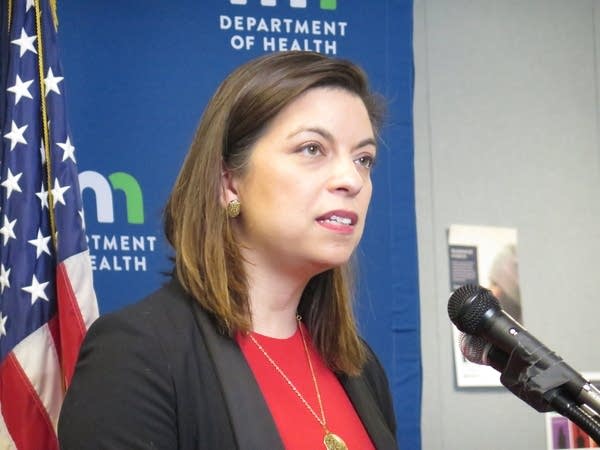New analysis reveals 'alarming' number of Minnesota teens reporting sexual exploitation

At least 5,000 teens in Minnesota say they’ve traded sex for something of value. That startling figure comes from researchers at the University of Minnesota and the state Health Department, who pored through data from a recent survey of high school students. Advocates say this reveals a greater need for outreach and prevention efforts.
“Have you ever traded sex or sexual activity to receive money, food, drugs, alcohol, a place to stay or anything else?” That’s one of the many questions put to ninth and 11th graders across Minnesota last year as part of the triennial Minnesota Student Survey.
Of the 80,000 who took the survey, 1.4 percent answered yes.
This is the first time this question appeared on the survey. Minnesota Department of Health Commissioner Jan Malcolm said researchers included it in part to get more insight about a broader trend — a sharp increase in students reporting long-term mental health problems.
Create a More Connected Minnesota
MPR News is your trusted resource for the news you need. With your support, MPR News brings accessible, courageous journalism and authentic conversation to everyone - free of paywalls and barriers. Your gift makes a difference.
“We know that sexual exploitation is part of this picture,” Malcolm said, “because it harms mental well-being and puts children and youth at risk.”
University of Minnesota nursing professor Lauren Martin, one of the researchers parsing the data, said 5,000 is a conservative estimate of the number of young people who’ve traded sex for something of value.
“Some youth may be reluctant to answer yes to this kind of a question because it’s a stigmatized activity. The Minnesota Student Survey is conducted on one day in school, so it does not include youth who missed school on that day,” Martin said.

Martin also notes that the teens who are more likely to be exploited — those who don’t go to school at all — were not included in the survey.
She said while it doesn’t provide details on specific behavior, earlier research shows young people trade sex for a variety of reasons — some to meet basic needs; others are forcibly trafficked.
However, the survey did break down who’s impacted most. Boys and girls report trading sex at roughly equivalent rates of 1.2 and 1.3 percent respectively. The figure is 3.3 percent for American Indian students and nears 6 percent among transgender youth. Numbers were particularly high among those who’ve been in a juvenile correctional facility or foster care, faced an unstable housing situation or attended an alternative school.
Beatriz Menanteau oversees violence prevention for the state Health Department. That includes the Safe Harbor program, which diverts young trafficking victims from the criminal justice system to stable housing and counseling.
She said the new survey data show there’s an even greater need for these services.
“Our youth should not have to navigate these difficult situations because people should not be asking them to. People should not be allowed to exploit the vulnerabilities of our youth,” said Menanteau. “And we should work to prevent those vulnerabilities in the first place.”

Menanteau said a key part of prevention is educating young people.
Jenny Miller with the greater Twin Cities YMCA trains teachers, nurses, law enforcement and others in a curriculum for youth called “Not a Number.” She said a key focus is defining healthy and unhealthy relationships.
“In ‘Not a Number,’ we take real-life examples of dialogues that take place on the internet to stories about individuals ranging in age and experience and talk through what are the red flags that we see here, how can we protect ourselves if we found ourselves or somebody we cared about in this situation,” Miller said.
Even though an alarming number of teens report that they were sexually exploited, Health Commissioner Jan Malcolm notes that they have not given up hope, saying that nearly all have post-high-school plans including career training, the military or college.